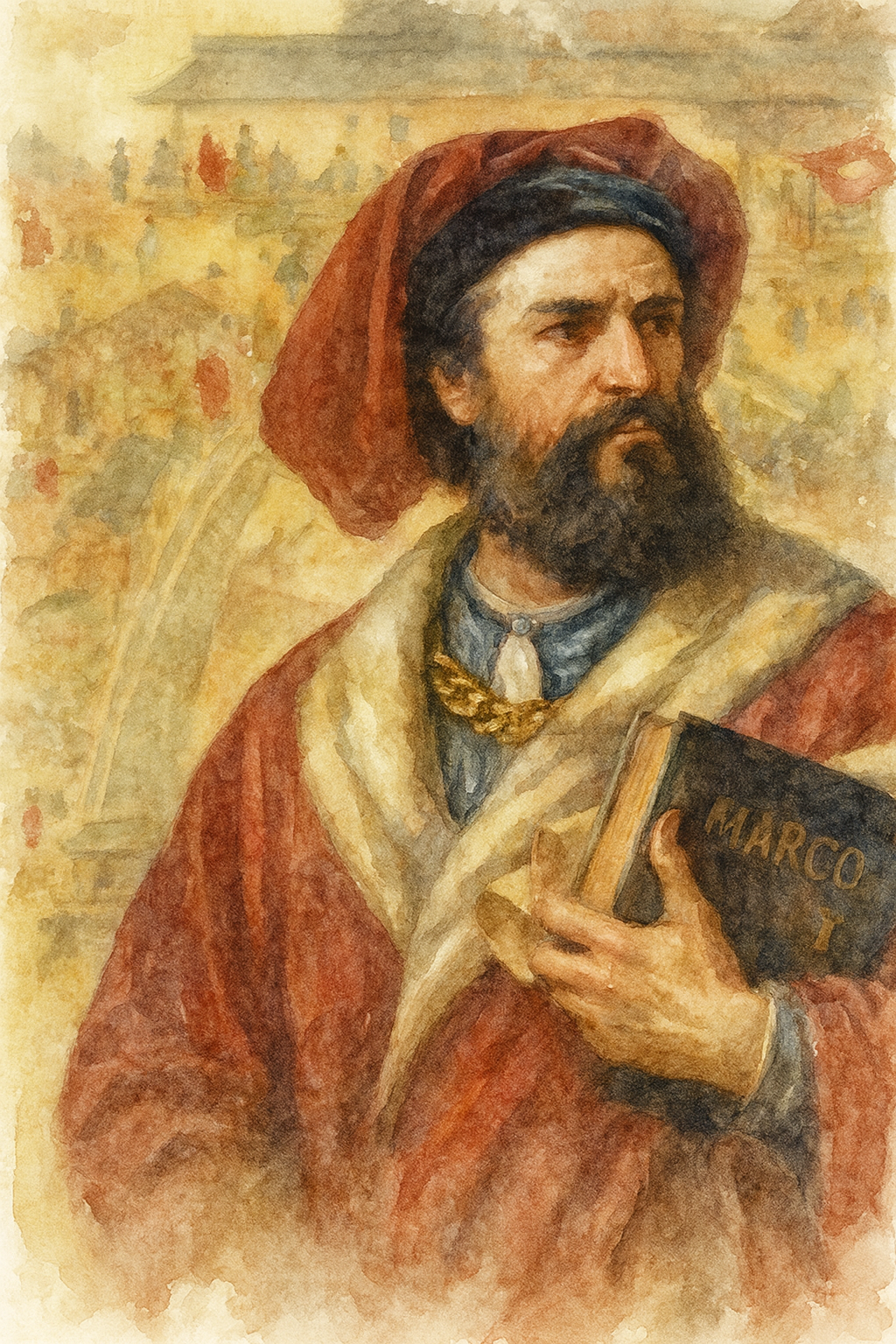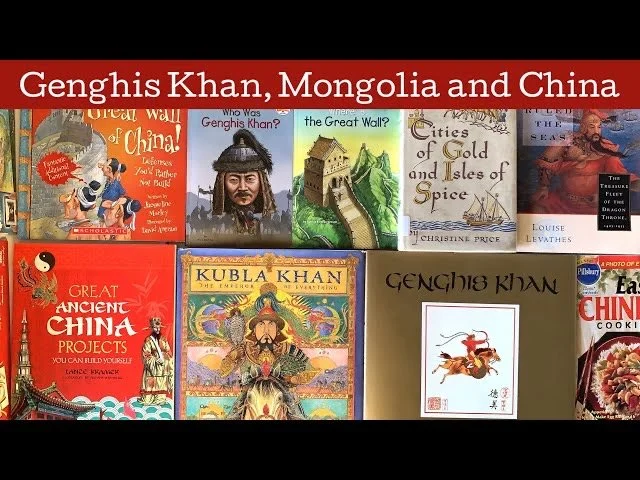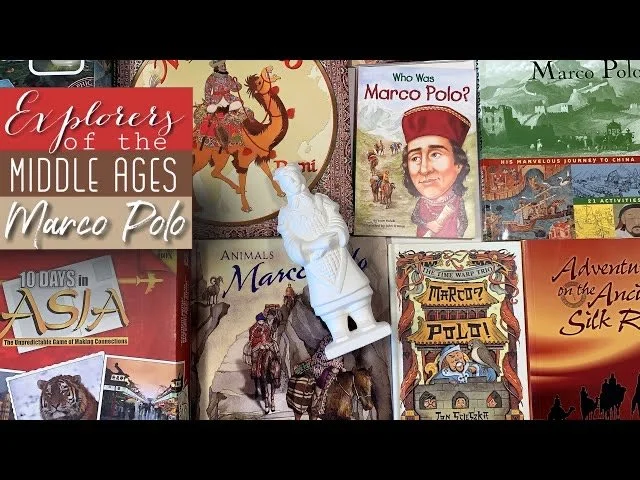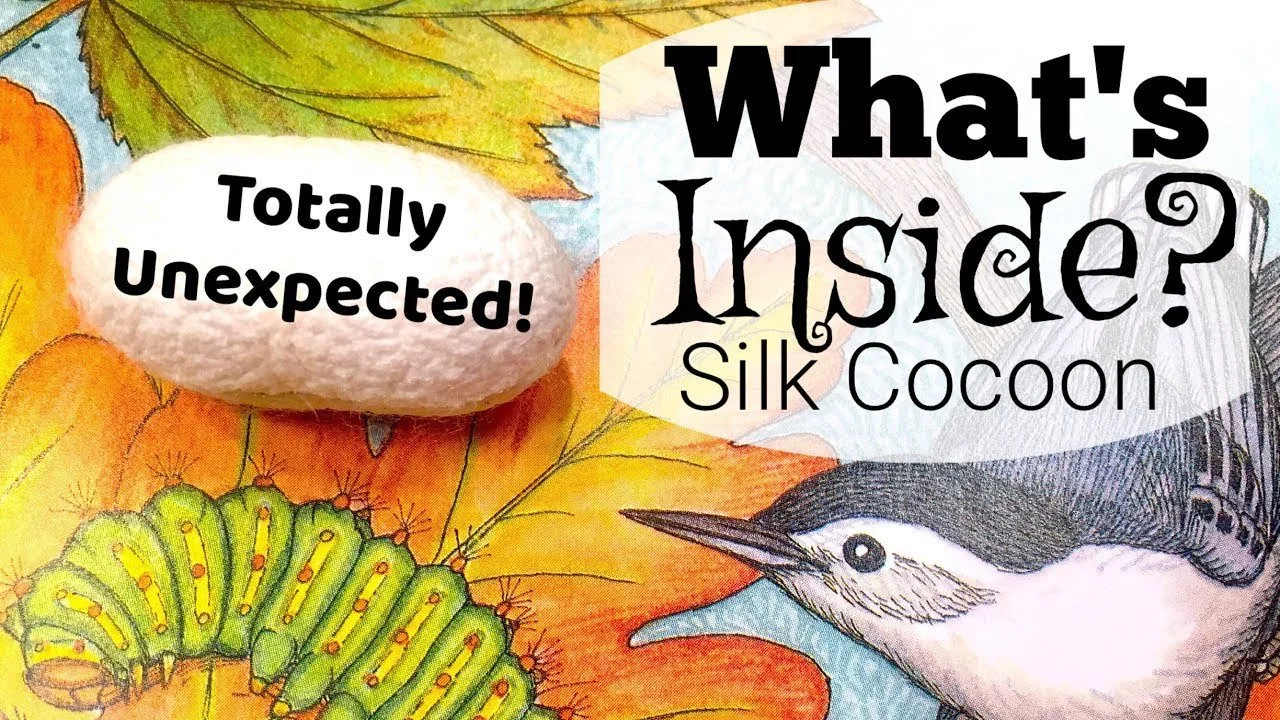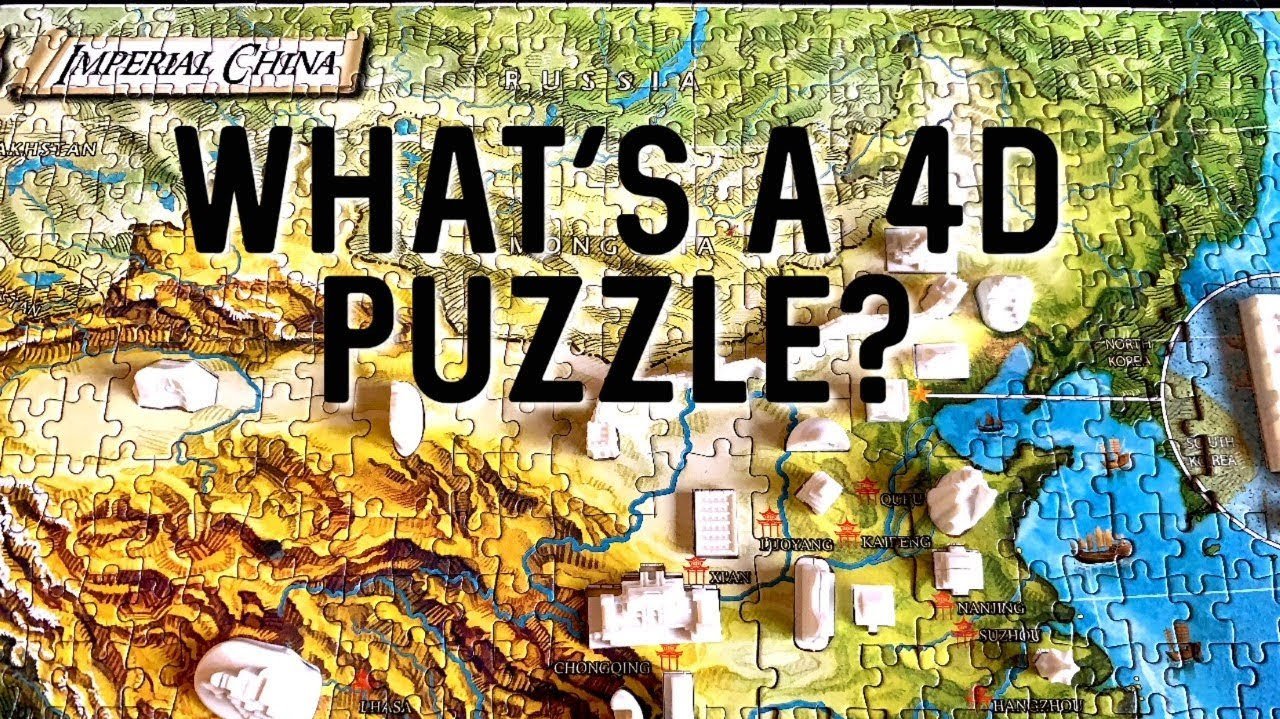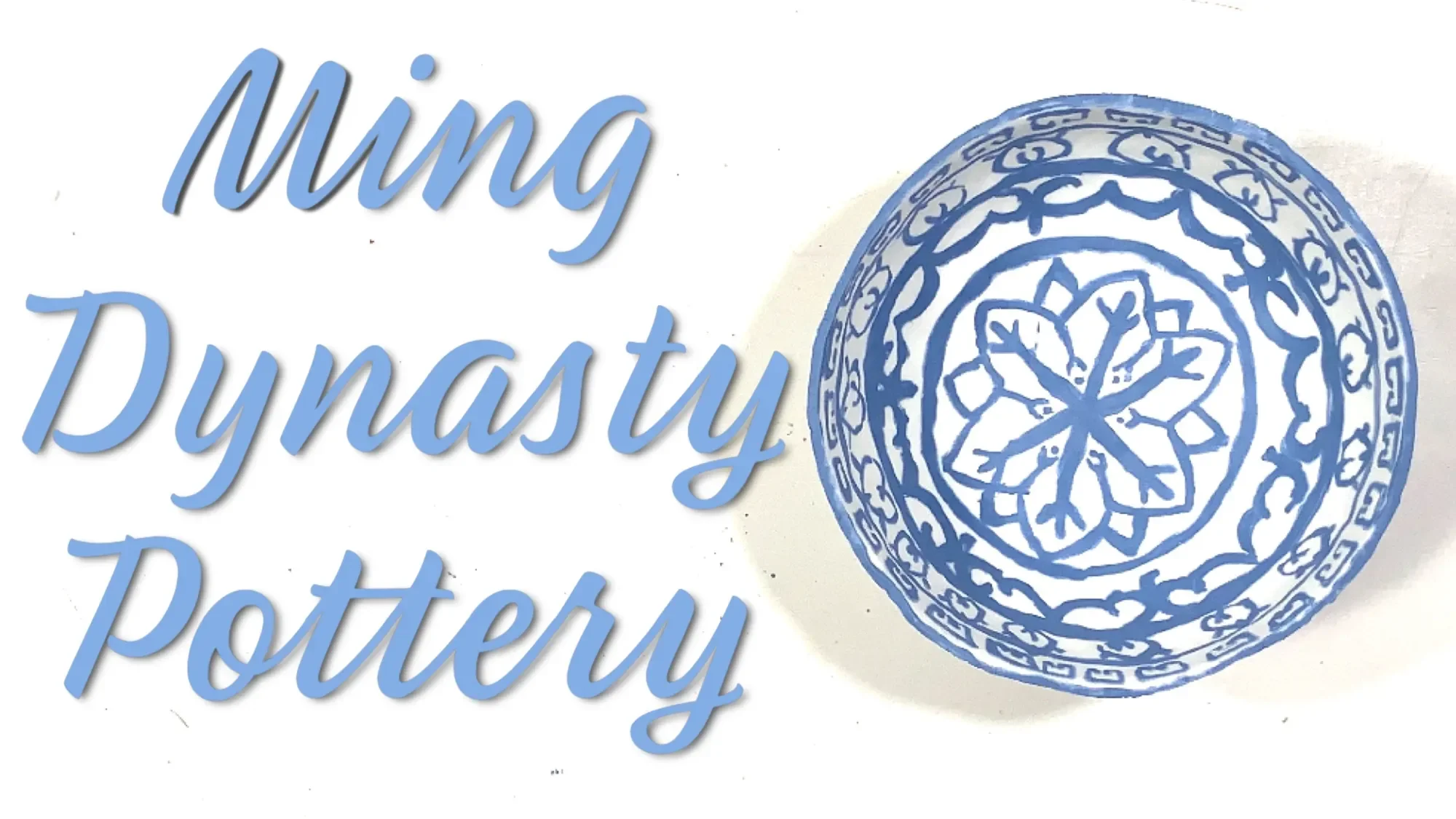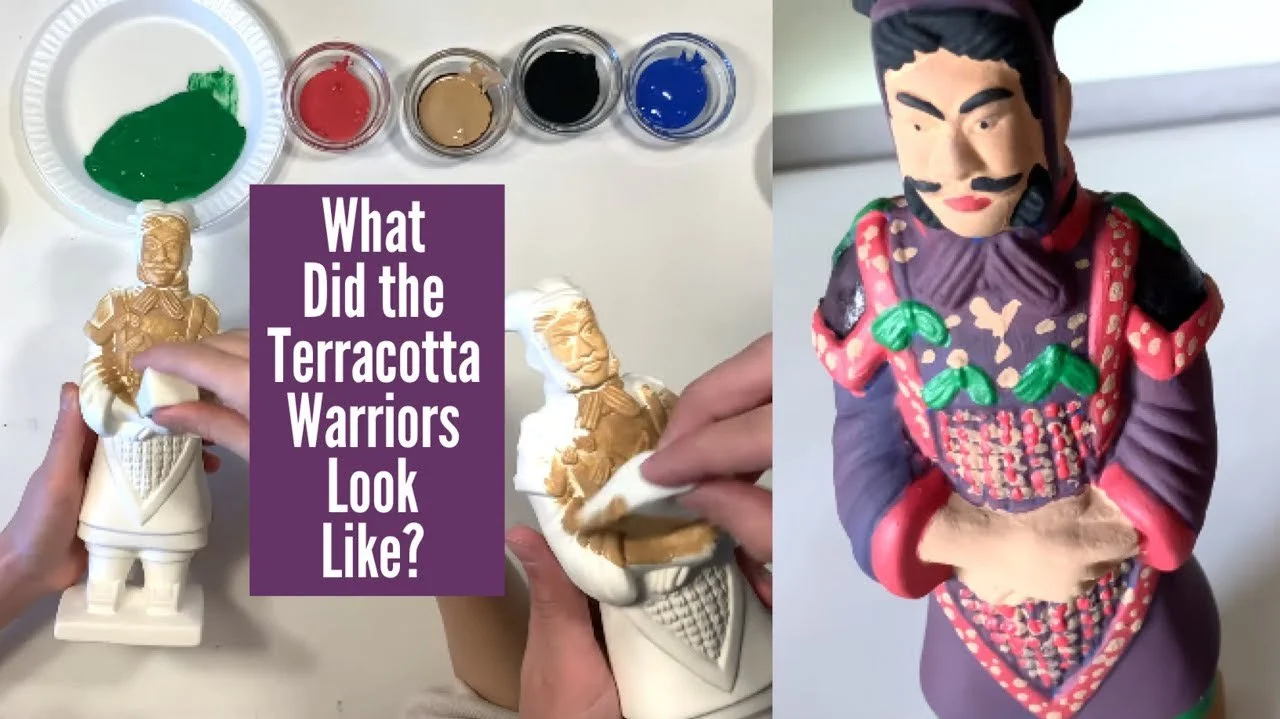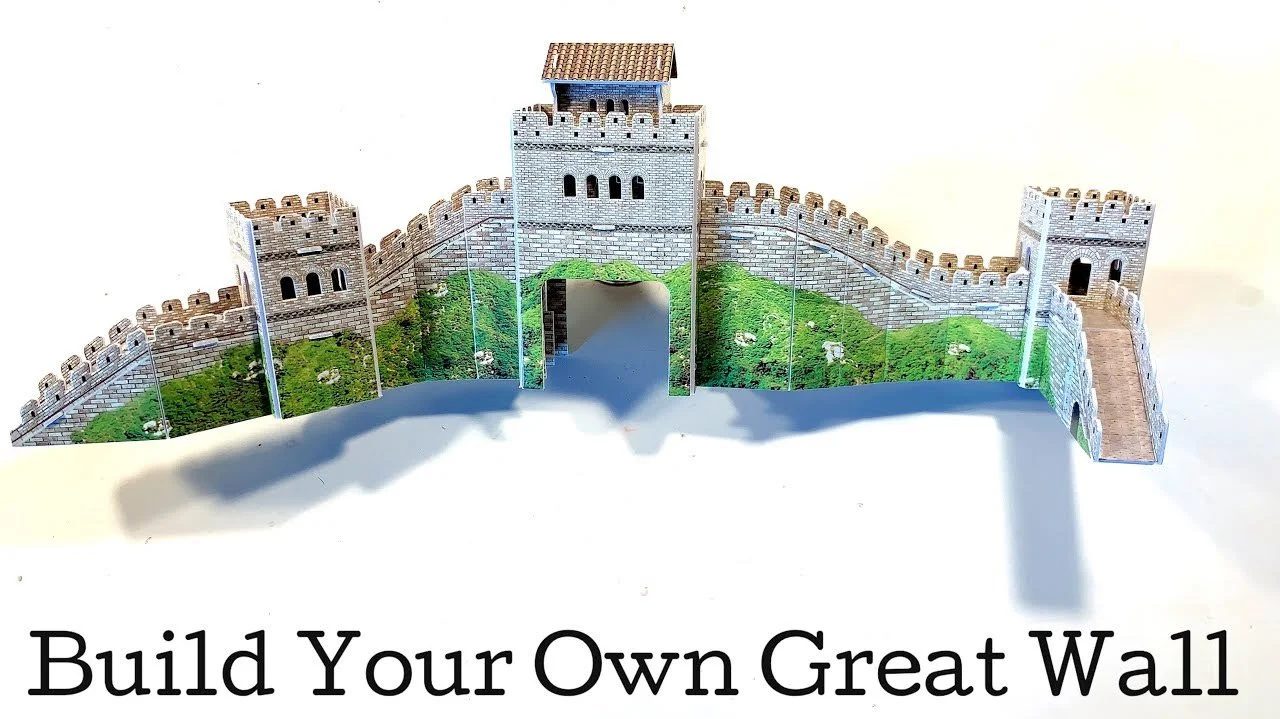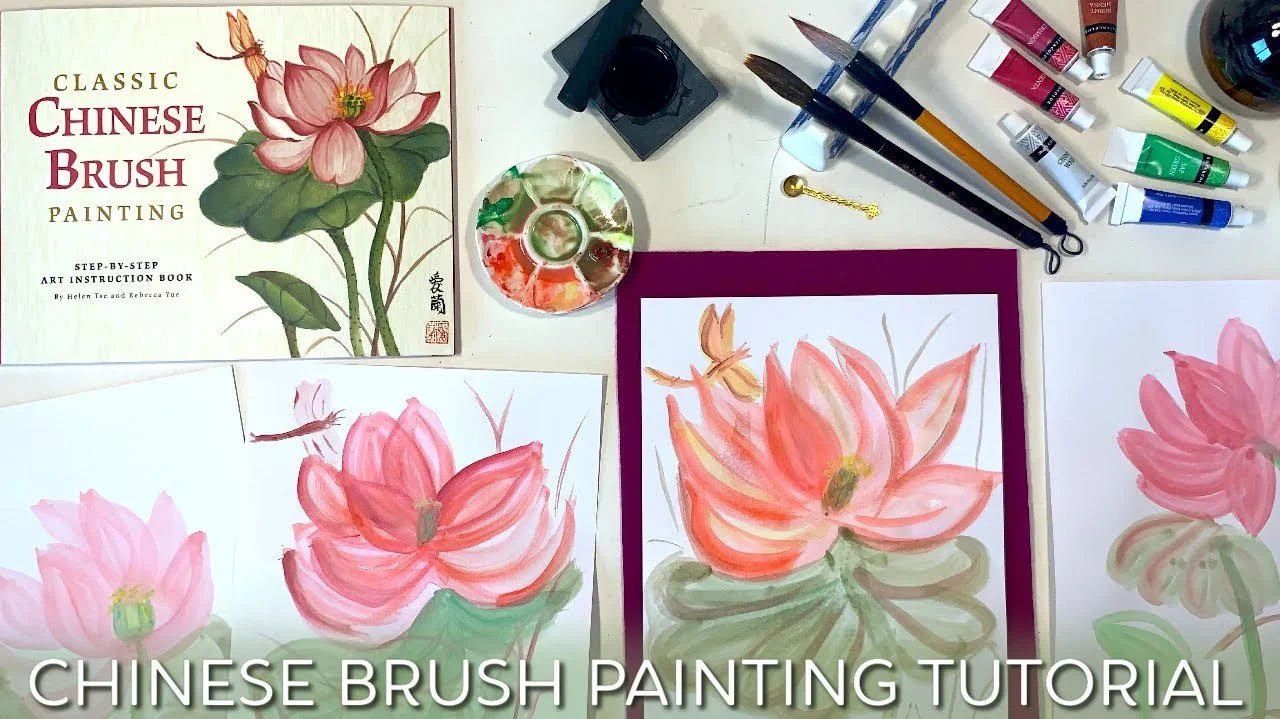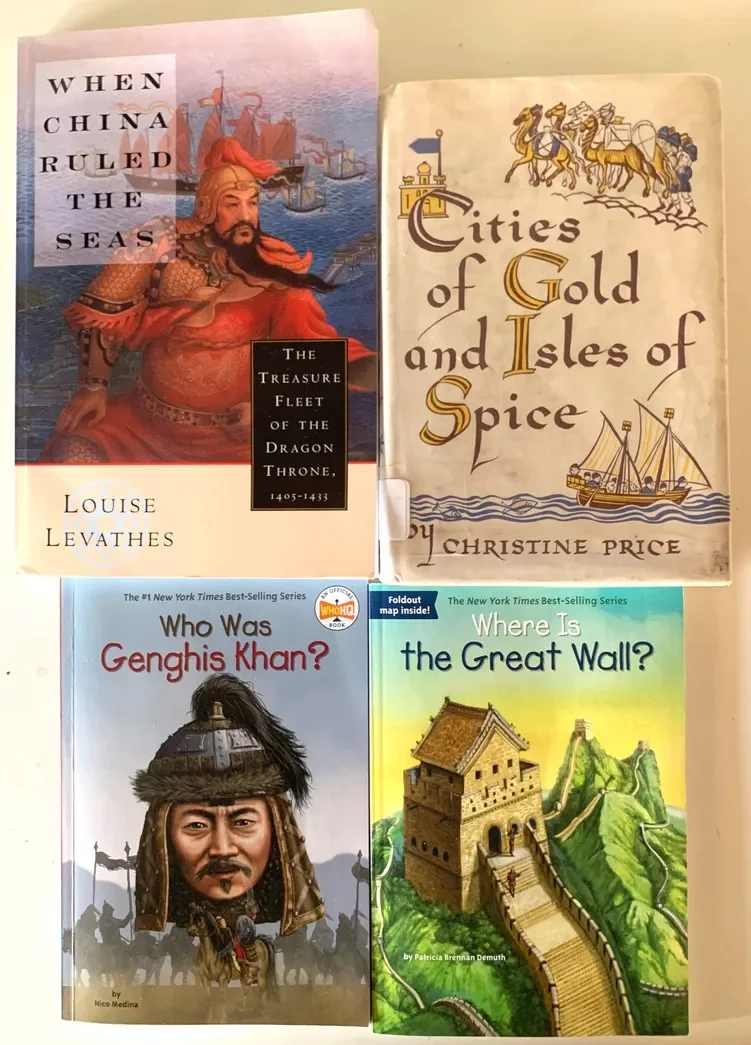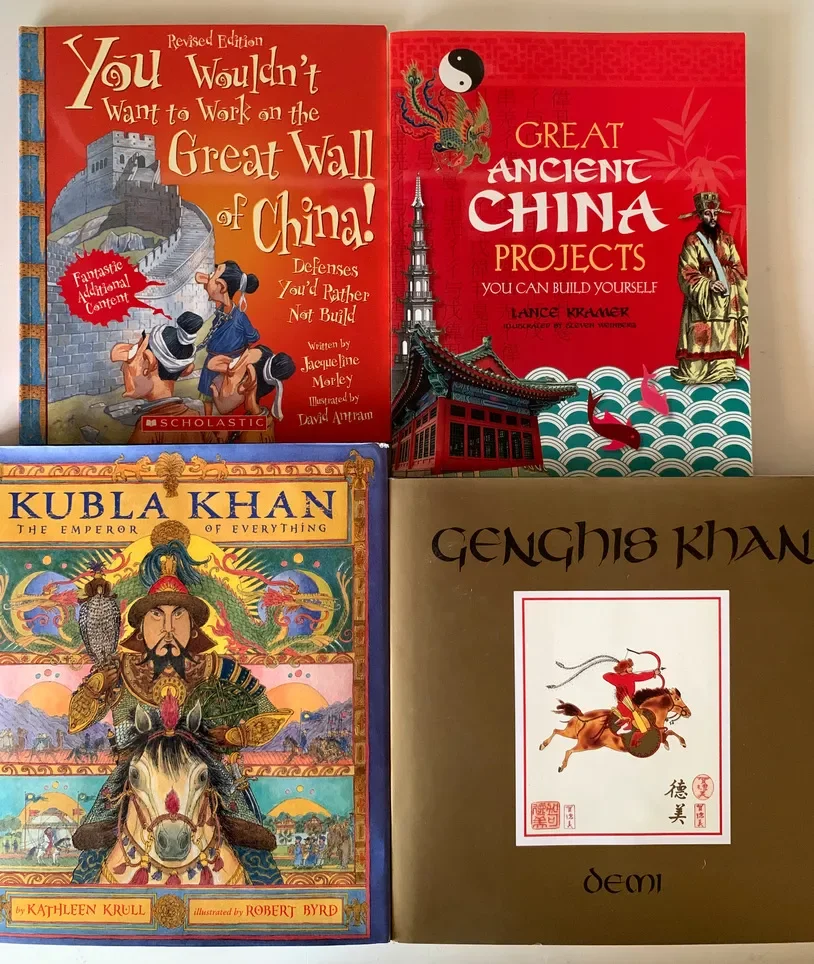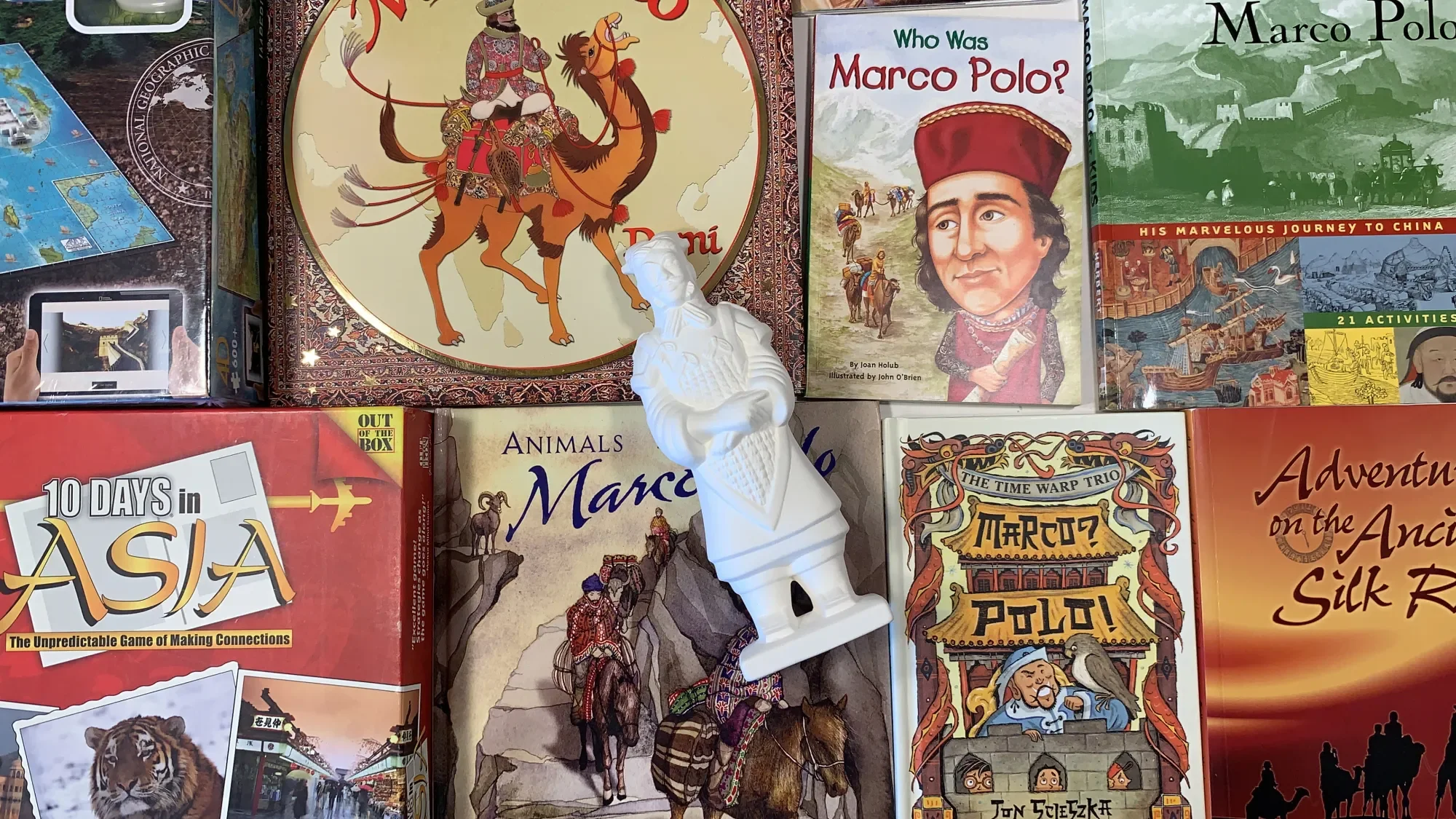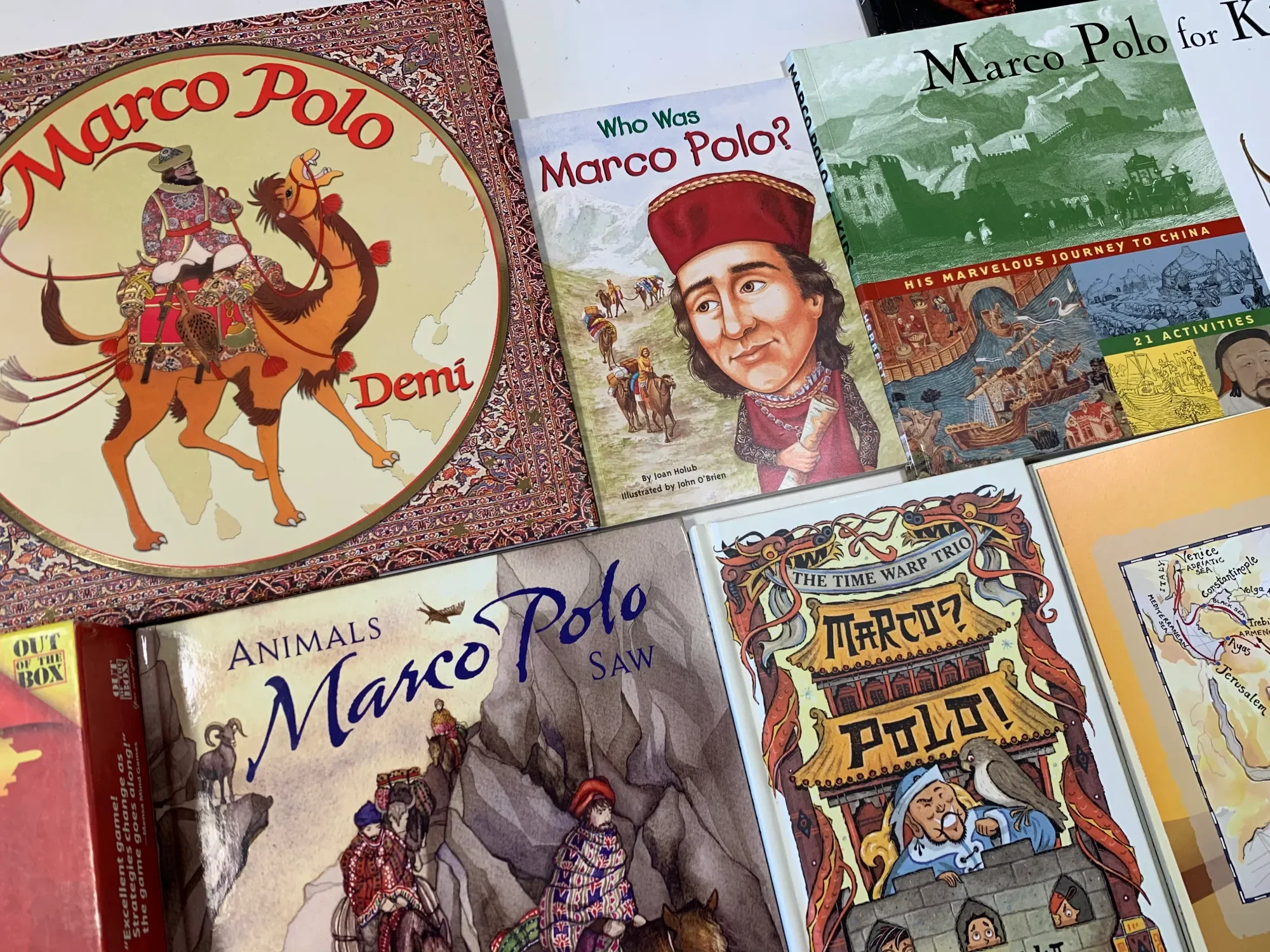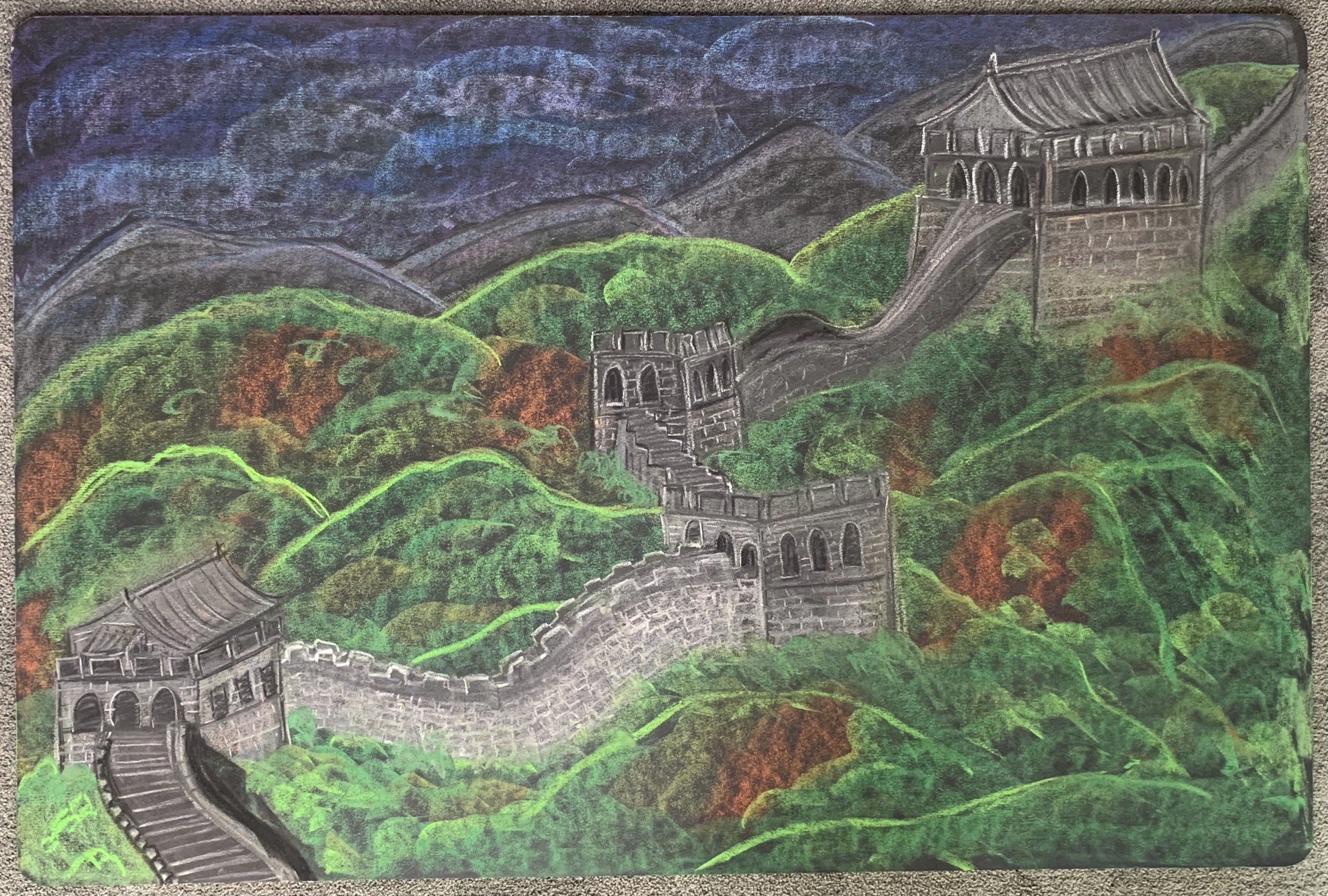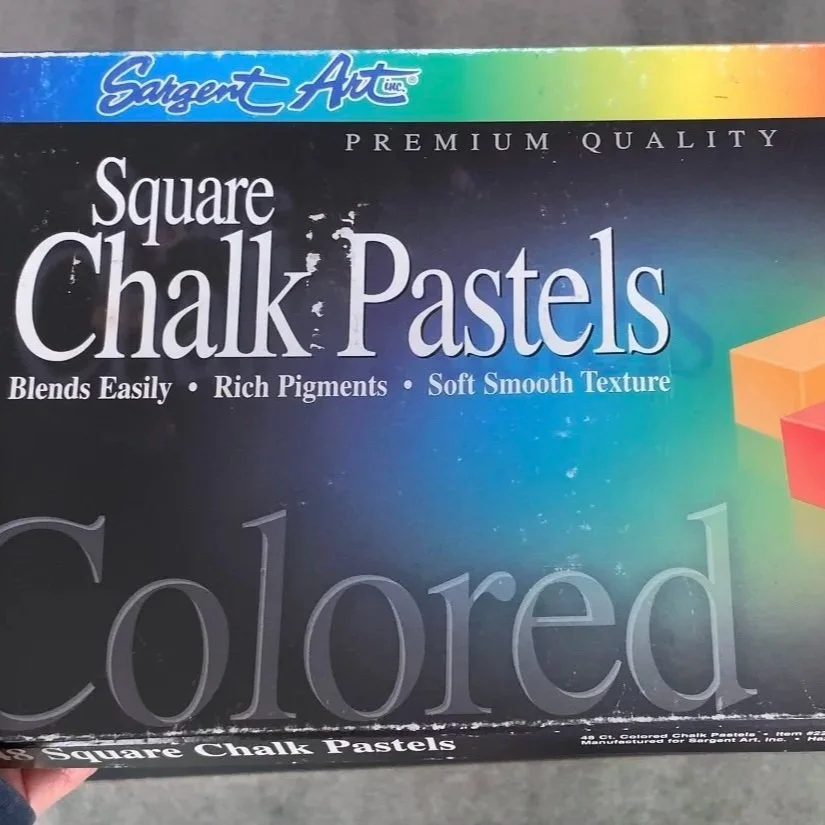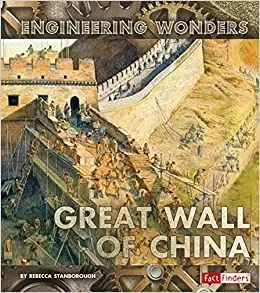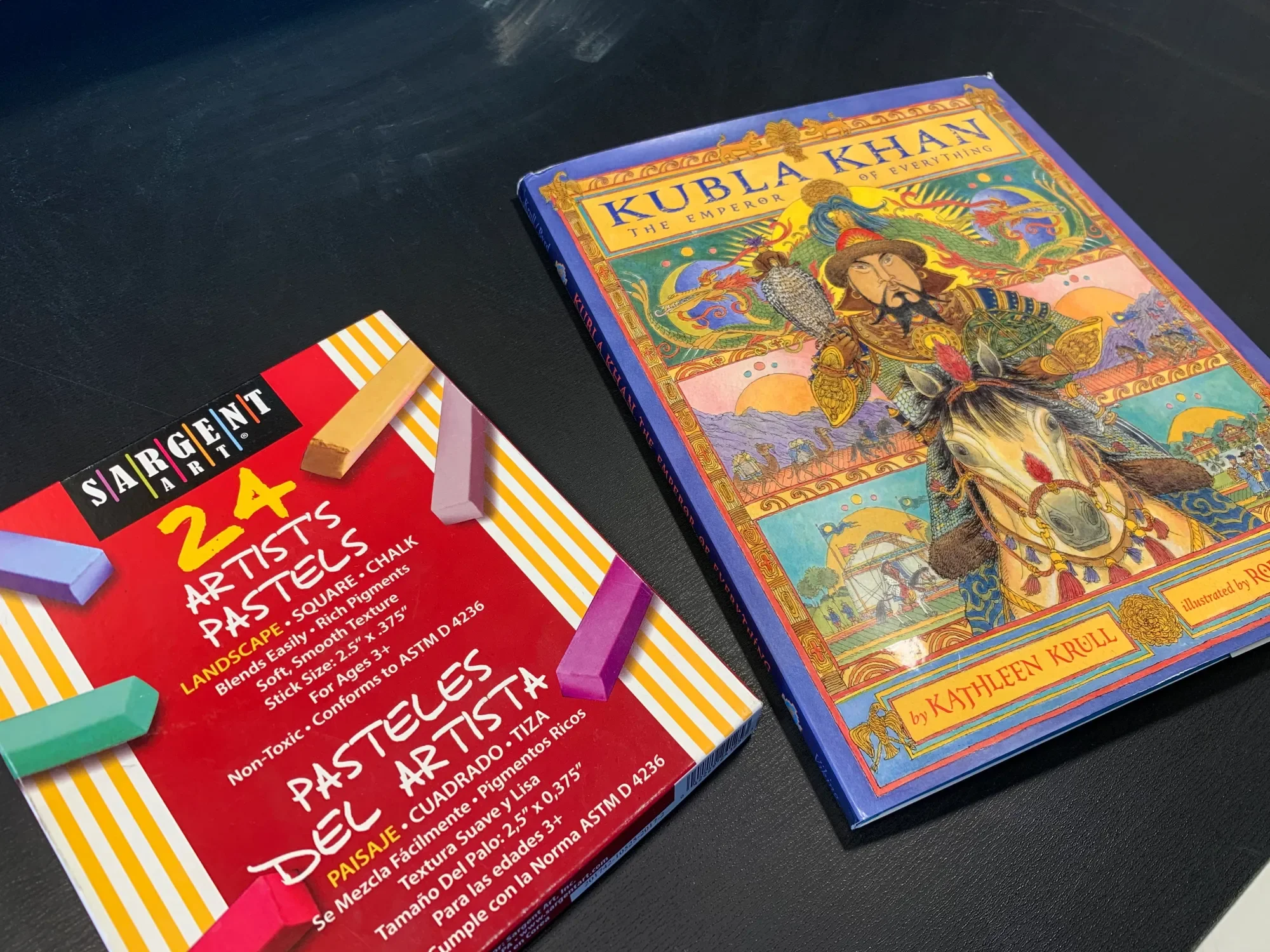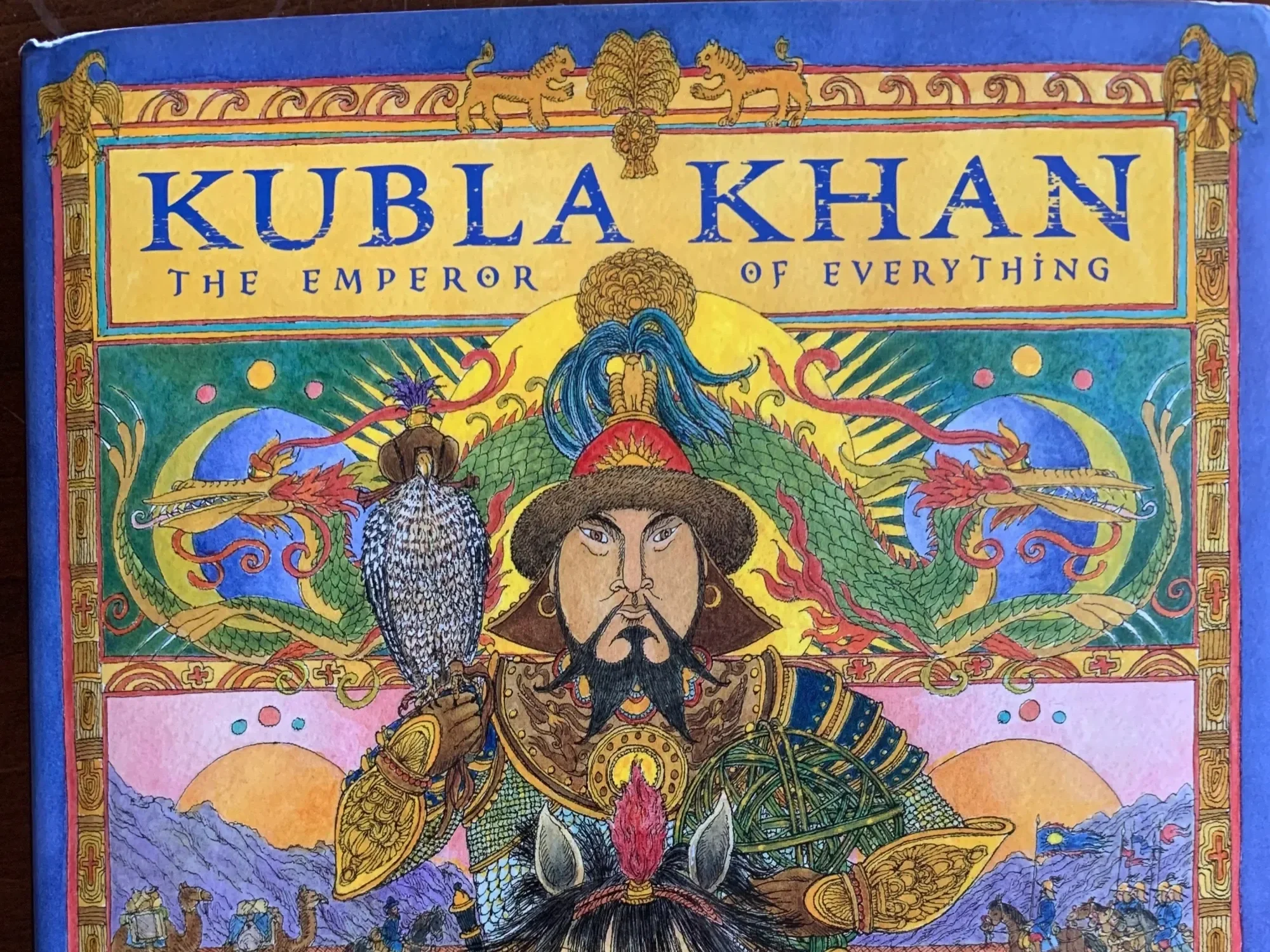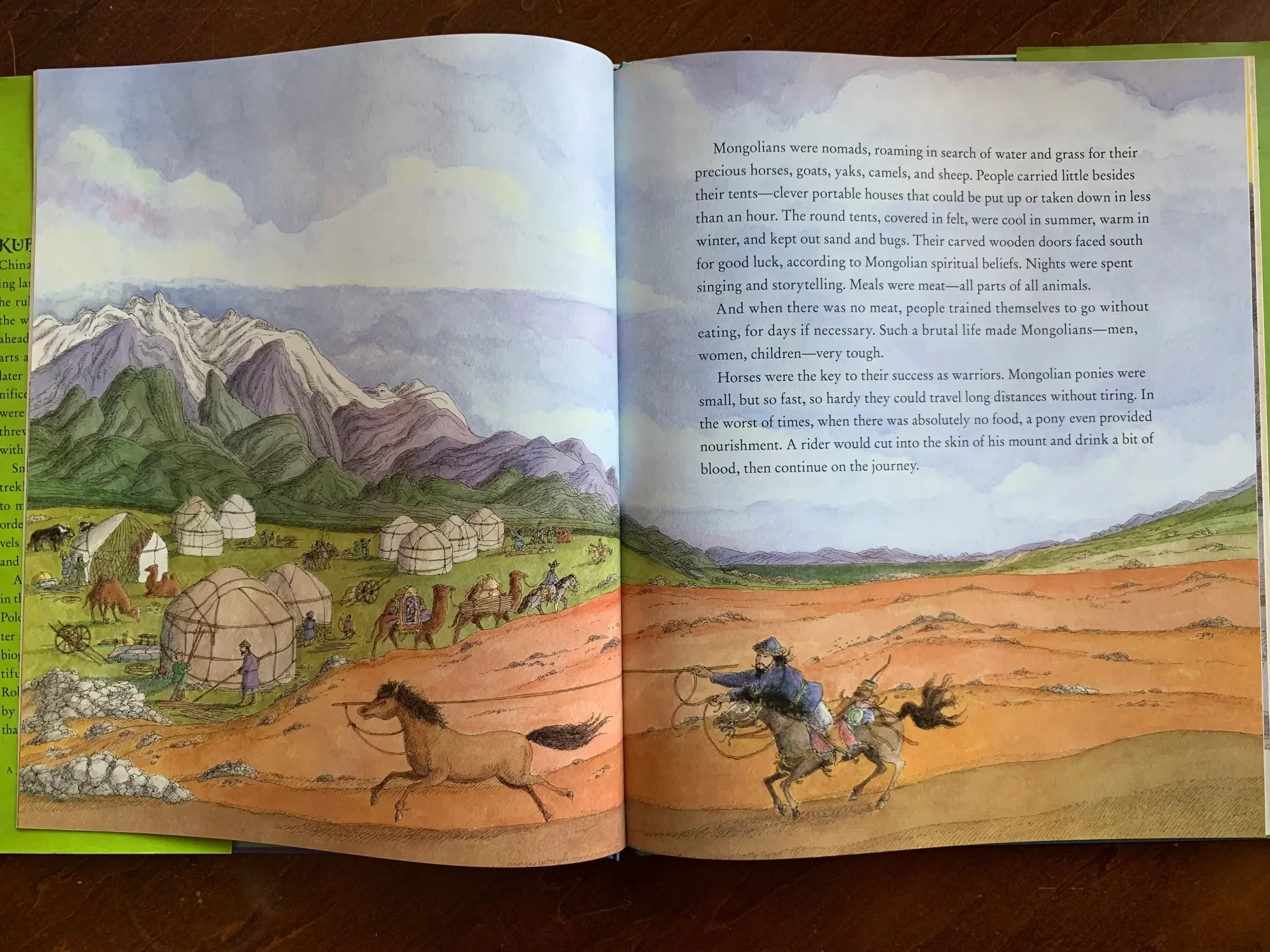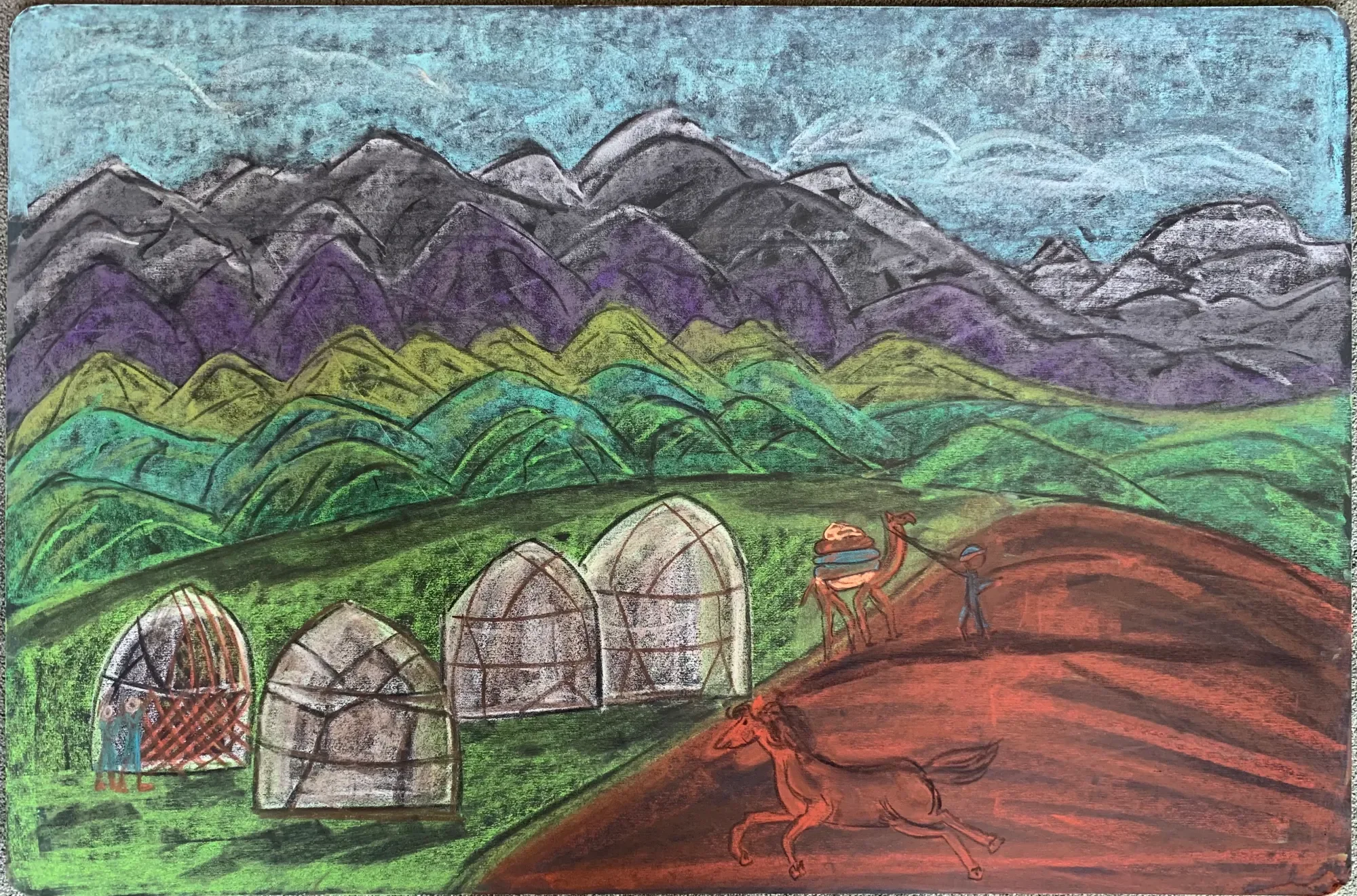
Marco Polo & Genghis Khan
Marco Polo & Genghis Khan
When Kublai Khan completed the conquering of China in 1279, that his grandfather, Genghis Khan had started in 1211, some changes took place, but the Mongol rule was short lived in respect to the long time span of China. During the reign of Genghis Khan’s grandson, Kublai Khan, Marco Polo, an Italian merchant became the Khan's ambassador for nearly two decades. Let's explore that time period of the 1200-1400s in Asia and discover a world of culture, civilization and expansion.
When we first embarked on our Silk Road main lesson block, we thought we would simply add a few resources to complement our Middle Ages unit. Three years later and this little unit has grown into several deeply engaging main lesson blocks that span over 1000 years of history and half the world from North Africa to China. As we explored historical events and notable figures, we were whisked away into histories that deserved their own units rather than afterthoughts to a larger Middle Ages unit. As a result, we now have an African main lesson block which focuses on the empires of Mali, Ghana and Songhai, the king Mansa Musa and the time period of about the 900s to the 1400s. We also did a unit on Ibn Battuta, Marco Polo and the Great Khans of Mongolia. That led us to China, so a unit on Ancient China naturally emerged, which led us full circle to the Silk Road and the expansion and diversifying of ideas, culture and religion, which naturally brought us back to a unit on Islam and the Islamic Golden Age which ended up being an extensive unit in and of itself. So when looking into the Silk Road, what originally was going to be books that complement the Golden Age of Islam or Ancient China, became its own independent and focused unit. In this unit we explore what it was like for merchants and caravans on the silk road. We discover the historical figures who traversed the silk road for the sake of religion, trade and conquering. We learn how this highway changed the course of history in profound ways and how through trade, more than just products were exchanged.
Marco Polo & Genghis Khan
-
The Great Khans of Mongolia | Kubla Khan, Genghis Khan, The Great Wall of China
It's not a history unit if you don't talk about the people. After all history is His Story right? Her story is mixed in there, but is rarely the focus. While I have not made an effort to explore female historical figures, I think we do ourselves, our education and our children a disservice when we don't include their stories.
-
Marco Polo Unit Study
When we first embarked on our Silk Road main lesson block, we thought we would simply add a few resources to complement our Middle Ages unit. Three years later and this little unit has grown into several deeply engaging main lesson blocks that span over 1000 years of history and half the world from North Africa to China.
-
The Great Wall of China Chalk Drawing
The chalkboard I'm using for this chalk drawing measures 24"x 36" but it comes in smaller sizes. Of all the chalkboards I've used, I love these the most (be sure to get the same brand if you want the same results). I find the size to be suitable for most chalk drawings, and what's great about it is that you can have a few of them to work with rather than just one big one.
-
Genghis Khan | Mongolian Chalk Drawing
This chalk drawing is inspired by the book Kubla Khan the Emperor of Everything by Kathleen Krull. I used my Sargent Art Square Chalk Pastels and my favorite chalkboard, a 2'x3' blackboard available from Paper, Scissors Stone at Waldorf Supplies. This chalk drawing is of a Mongolian landscape with yurts in the foreground with camels and horses as they are significant to Mongol lifestyle and livelihood.
Marco Polo & Genghis Khan Projects & Activities
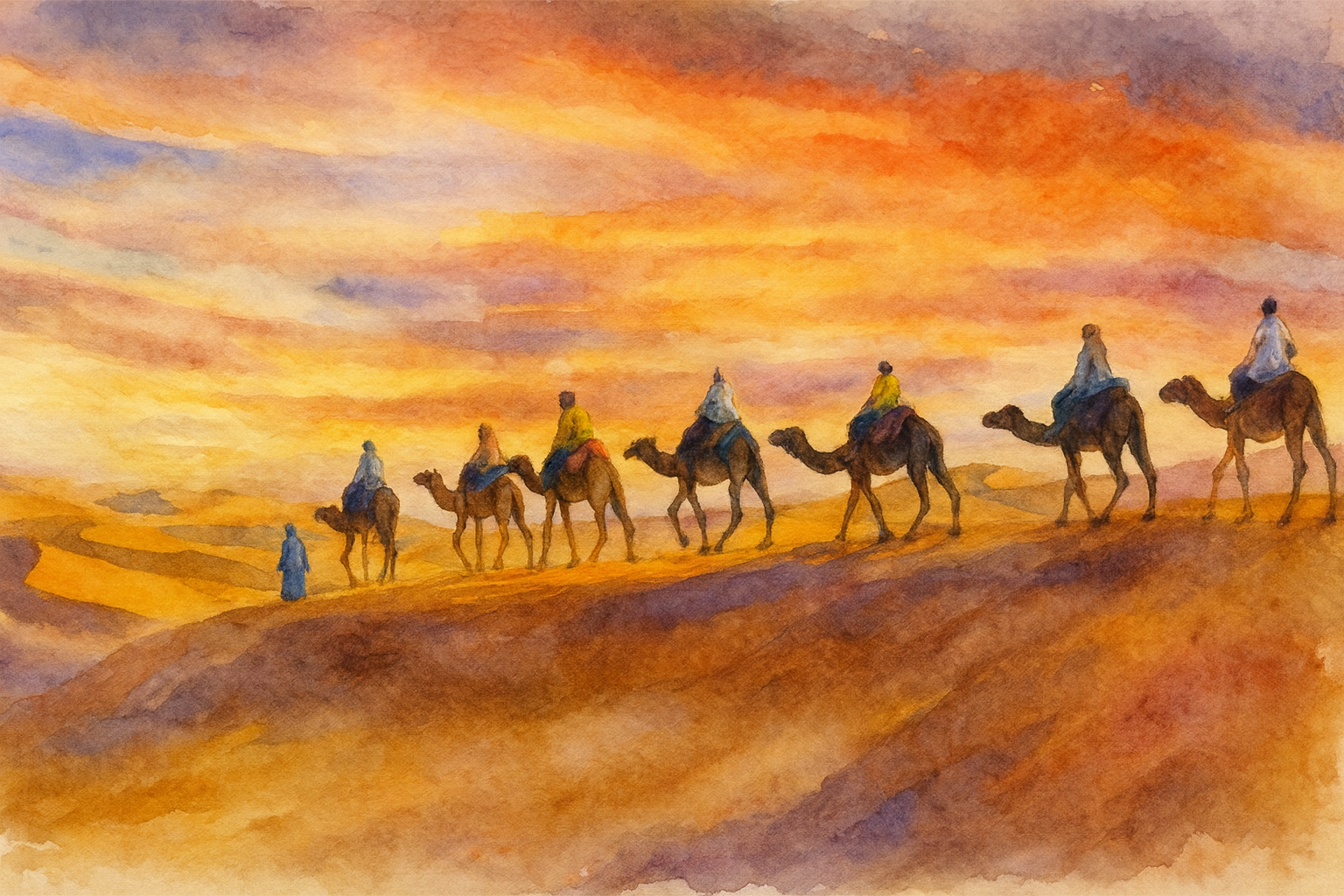
Marco Polo & Genghis Khan
The Great Khans of Mongolia | Kubla Khan, Genghis Khan, The Great Wall of China
It’s not a history unit if you don’t talk about the people. After all history is His Story right? Her story is mixed in there, but is rarely the focus. While I have not made an effort to explore female historical figures, I think we do ourselves, our education and our children a disservice when we don’t include their stories. One book series I recently found that does a fair job exposing what it’s like to be a girl and a boy in history is the “If You Were Me and Lived in…Ancient China” by Carole P. Roman. There are several in this series and what I like is seeing the difference in what kind of life you would have depending on whether you were a girl or a boy, or woman or man, or rich or poor. For our Ancient China and Silk Road unit, we did a mini explorative unit on Genghis Khan, Kublai Khan and Marco Polo. Other notable biographies specifically on Chinese figures would be ZhengHe, Xuanzang, and Confucius as well as emperors from the different dynasties.
It’s not a history unit if you don’t talk about the people. After all history is His Story right? Her story is mixed in there, but is rarely the focus. While I have not made an effort to explore female historical figures, I think we do ourselves, our education and our children a disservice when we don’t include their stories. One book series I recently found that does a fair job exposing what it’s like to be a girl and a boy in history is the “If You Were Me and Lived in…Ancient China” by Carole P. Roman. There are several in this series and what I like is seeing the difference in what kind of life you would have depending on whether you were a girl or a boy, or woman or man, or rich or poor. For our Ancient China and Silk Road unit, we did a mini explorative unit on Genghis Khan, Kublai Khan and Marco Polo. Other notable biographies specifically on Chinese figures would be ZhengHe, Xuanzang, and Confucius as well as emperors from the different dynasties.
Marco Polo Unit Study
When we first embarked on our Silk Road main lesson block, we thought we would simply add a few resources to complement our Middle Ages unit. Three years later and this little unit has grown into several deeply engaging main lesson blocks that span over 1000 years of history and half the world from North Africa to China. As we explored historical events and notable figures, we were whisked away into histories that deserved their own units rather than afterthoughts to a larger Middle Ages unit. As a result, we now have an African main lesson block which focuses on the empires of Mali, Ghana and Songhai, the king Mansa Musa and the time period of about the 900s to the 1400s.
We also did a unit on Ibn Battuta, Marco Polo and the Great Khans of Mongolia. That led us to China, so a unit on Ancient China naturally emerged, which led us full circle to the Silk Road and the expansion and diversifying of ideas, culture and religion, which naturally brought us back to a unit on Islam and the Islamic Golden Age which ended up being an extensive unit in and of itself. So when looking into the Silk Road, what originally was going to be books that complement the Golden Age of Islam or Ancient China, became its own independent and focused unit. In this unit we explore what it was like for merchants and caravans on the silk road. We discover the historical figures who traversed the silk road for the sake of religion, trade and conquering. We learn how this highway changed the course of history in profound ways and how through trade, more than just products were exchanged.
The Great Wall of China Chalk Drawing
For this chalk drawing, I'm using Sargent Art Square chalk pastels from Blick Art Material and my small portable chalkboards (which can be mounted on the wall) from Paper Scissors Stone. The chalkboard I'm using for this chalk drawing measures 24"x 36" but it comes in smaller sizes. Of all the chalkboards I've used, I love these the most (be sure to get the same brand if you want the same results). I find the size to be suitable for most chalk drawings, and what's great about it is that you can have a few of them to work with rather than just one big one. It's really hard erasing chalk drawings, and this way, I can keep them longer and have multiples at the same time. I like the surface of these chalk boards because they allow for the best blending I've experienced so far (I've used 4 types of chalkboards including one with chalkboard paint). My Sargent Art Chalk pastels are vibrant and colorful and offer a great range of colors. I do need to use a damp washcloth to fully and cleanly remove all the chalk and residue but once the chalkboard dries, it's ready to go.
Genghis Khan | Mongolian Chalk Drawing
When I initially put together our Silk Road main lesson block, I scheduled it for several weeks even several months. That was three years ago and we are still slowly making our way through this unit which has grown extensively to include Europe, Africa, Arabia and Asia. In this unit which focused on Marco Polo, Genghis Khan and other figures found along the Silk Road, I decided to add another chalk drawing as I circle back to this unit and continue it with a focus on the 1200s in Mongolia.
This chalk drawing is inspired by the book Kubla Khan the Emperor of Everything by Kathleen Krull. I used my Sargent Art Square Chalk Pastels and my favorite chalkboard, a 2’x3′ blackboard available from Paper, Scissors Stone at Waldorf Supplies. This chalk drawing is of a Mongolian landscape with yurts in the foreground with camels and horses as they are significant to Mongol lifestyle and livelihood.

